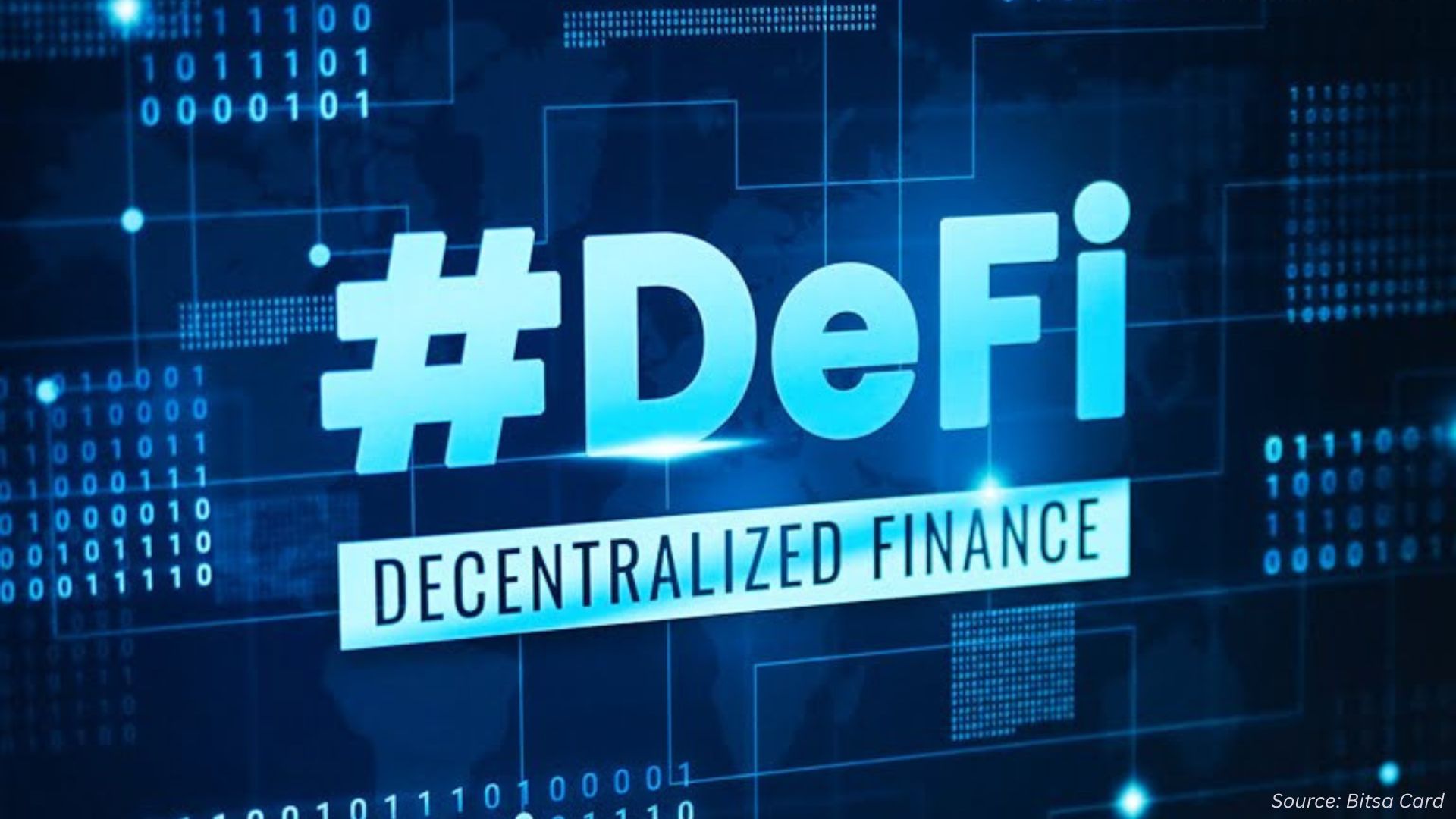How Is DeFi Evolving in 2025? Real-World Utility, Security Risks, and the Road Ahead
Published: 2025-11-24

Decentralized Finance (DeFi) is entering a new phase in 2025. The sector is shifting from theoretical experimentation to real-world deployment, as businesses across commerce, mobility, gaming, and digital services begin integrating blockchain-based financial operations into their products. This evolution is also exposing vulnerabilities especially in user security, domain control, and the way Web3 platforms are structured. At Next Move Strategy Consulting, we examined these developments closely to understand what is driving adoption, what risks are emerging, and how the next generation of decentralized finance is taking shape.
What’s Driving the Shift Toward Real-World DeFi Adoption?
One of the biggest changes in 2025 is the expansion of DeFi beyond trading and investment platforms. Businesses are now using blockchain rails to automate payments, manage settlements, and build programmable financial processes that reduce delays and remove intermediaries from routine transactions. These integrations are happening quietly but at scale, enabling faster, more transparent, and more efficient value exchange.
Many companies are also moving toward in-wallet financial actions that give users the ability to complete transactions without relying on external payment systems. This shift is accelerating because programmable smart contracts allow organizations to design automated workflows from reward systems and access permissions to recurring payments and compliance checks. The resulting experience is smoother, more consistent, and far more flexible than traditional financial architecture.
How Are Businesses Using DeFi Today?
The use of DeFi varies widely across industries, but the underlying motivation is consistent: to create autonomous, low-friction financial interactions that operate in real time. In commerce, blockchain-based payment processing is being deployed to support instant, global transactions without the bottlenecks of card networks or bank dependencies. Retailers and digital service platforms are also exploring tokenized loyalty systems that allow them to build dynamic, personalized rewards tied directly to user behavior.
In mobility and transportation, smart contracts are already being used to automate payments for rentals, tolls, parking, and shared services. These contracts settle instantly and transparently, reducing operational overhead and decreasing disputes. Gaming companies are using decentralized asset ownership for in-game items, characters, and currencies, creating more permanent digital identities and ownership rights for users. Even cloud storage networks are leveraging blockchain to automate resource allocation and usage-based payments, reducing human oversight and improving efficiency.
Across all these sectors, the broader trend is clear: businesses are embracing the programmability and automation of DeFi to deliver solutions that traditional systems cannot offer.
Why Is DNS Hijacking Becoming One of DeFi’s Most Serious Risks?
While decentralized systems are built to be resilient, the infrastructure surrounding them often remains centralized. This creates a paradox in the DeFi ecosystem: the smart contract layer may be secure, but the entry points that users rely on can still be compromised. DNS hijacking is one of the clearest examples of this weakness. By manipulating a platform’s domain system, attackers can redirect users to counterfeit interfaces that look identical to the original site. Once users attempt to interact with these fake pages, attackers can capture approvals, signatures, or wallet information.
The impact of such an attack goes far beyond immediate financial loss. Incidents of DNS hijacking undermine user confidence, erode the credibility of legitimate platforms, and create doubts about the safety of decentralized applications—even when the smart contracts remain untouched. This disconnect highlights a crucial reality: securing DeFi requires strengthening both decentralized and centralized infrastructure layers, especially the user-facing systems that form the first point of contact.
Why User Education Is Becoming a Critical Defense Layer in DeFi Security
As attacks become more sophisticated, user awareness has become one of the most important components of DeFi security. Many of the most damaging incidents occur not because the technology fails, but because users unknowingly approve malicious transactions, interact with fraudulent links, or overlook subtle signs of phishing attempts. Unlimited token approvals, in particular, remain a major vulnerability that attackers frequently exploit.
To address this, platforms are increasingly investing in educational initiatives that teach users how to verify contract addresses, review transaction approvals, and recognize suspicious activity. Businesses integrating crypto payroll or digital asset payments are also training employees on safe practices, ensuring that internal handling of digital assets does not become a weak point. The goal is to build a culture of awareness where users understand the risks and take proactive steps to protect themselves, reducing the effectiveness of common attack vectors.
How Can Traditional Security Models Enhance Decentralized Systems?
Although DeFi emphasizes decentralization, traditional security methods still play an essential role in protecting users and platforms. Multi-factor authentication adds an extra layer of verification for sensitive actions, reducing the risk of unauthorized access. Access controls based on the principle of least privilege help ensure that only necessary permissions are granted, minimizing insider threats and accidental misuse.
Multi-signature wallets are gaining popularity for their ability to distribute authorization across multiple parties, which significantly reduces the likelihood of a single compromised key leading to a major breach. Routine software updates, external audits, and ongoing transaction monitoring are equally important, as they help platforms identify weaknesses before attackers exploit them. Together, these measures create a multilayered security framework that strengthens decentralized infrastructure without compromising its core principles.
What Are the Best Practices for Strengthening Security in Web3 Banking and DeFi Platforms?
Platforms and users alike are adopting a set of best practices to reinforce trust and stability in the Web3 financial ecosystem. Many organizations are developing detailed incident response plans to ensure they can react quickly and effectively when a breach occurs. These plans are becoming standard as businesses recognize the need for immediate action in the event of a security event.
Bug bounty programs are also becoming more common as platforms increasingly rely on ethical hackers to identify hidden vulnerabilities. Regular security audits are now essential, especially for platforms dealing with high transaction volumes or user assets. Another emerging trend is the shift toward decentralized domain systems, such as blockchain-based naming frameworks, which reduce reliance on centralized DNS providers and make it harder for attackers to hijack user pathways.
The cumulative impact of these measures is a more robust, transparent, and user-safe environment for decentralized finance.
Next Move Strategy Consulting: Expert View
At Next Move Strategy Consulting, we see 2025 as a decisive year for DeFi. The ecosystem is transitioning from speculative experimentation to mature, real-world implementation. But this transition also demands stricter security standards, better user training, and stronger coordination between decentralized technologies and traditional safeguards.
Our analysis shows that the platforms that succeed in this environment will be those that prioritize resilience not just at the protocol level but across the entire user experience. Trust will be the most valuable currency in DeFi, and companies that build transparent, secure, and reliable systems will set the pace for the industry's next stage of growth.
About the Author
 Joydeep Dey is a seasoned SEO Executive, Content Writer, and AI expert with over 2½ years of experience in digital marketing and artificial intelligence. He specializes in SEO strategy, impactful content creation, and developing data-driven, AI-powered solutions that enhance online visibility and engagement. With a strong foundation in natural language processing and emerging AI technologies, Joydeep is known for simplifying complex concepts into clear, actionable insights.
Joydeep Dey is a seasoned SEO Executive, Content Writer, and AI expert with over 2½ years of experience in digital marketing and artificial intelligence. He specializes in SEO strategy, impactful content creation, and developing data-driven, AI-powered solutions that enhance online visibility and engagement. With a strong foundation in natural language processing and emerging AI technologies, Joydeep is known for simplifying complex concepts into clear, actionable insights.
About the Reviewer
 Sanyukta Deb is an accomplished Content Writer and Digital Marketing Strategist with extensive expertise in content strategy, SEO, and audience engagement. She specializes in building strong brand visibility through data-driven campaigns and impactful, value-added researched content. With a passion for creativity and innovation, she blends strategic thinking with design and communication to craft meaningful digital experiences. Over the years, she has contributed cross-functional marketing projects, driving measurable impact and audience engagement.
Sanyukta Deb is an accomplished Content Writer and Digital Marketing Strategist with extensive expertise in content strategy, SEO, and audience engagement. She specializes in building strong brand visibility through data-driven campaigns and impactful, value-added researched content. With a passion for creativity and innovation, she blends strategic thinking with design and communication to craft meaningful digital experiences. Over the years, she has contributed cross-functional marketing projects, driving measurable impact and audience engagement.















Add Comment